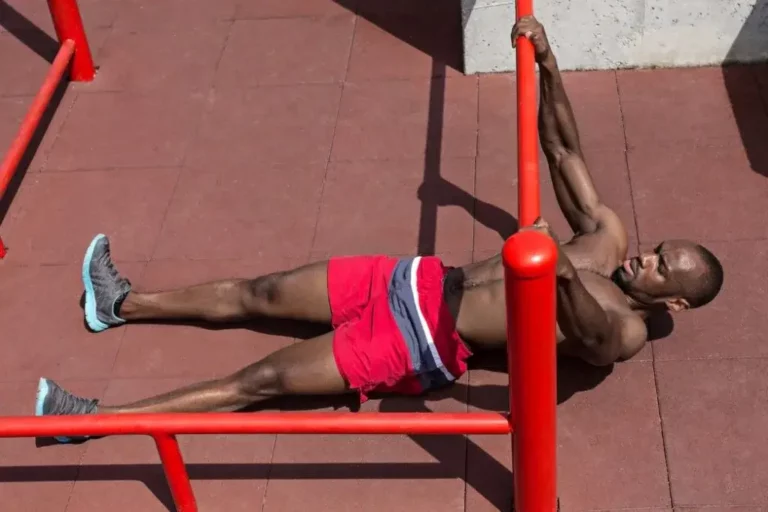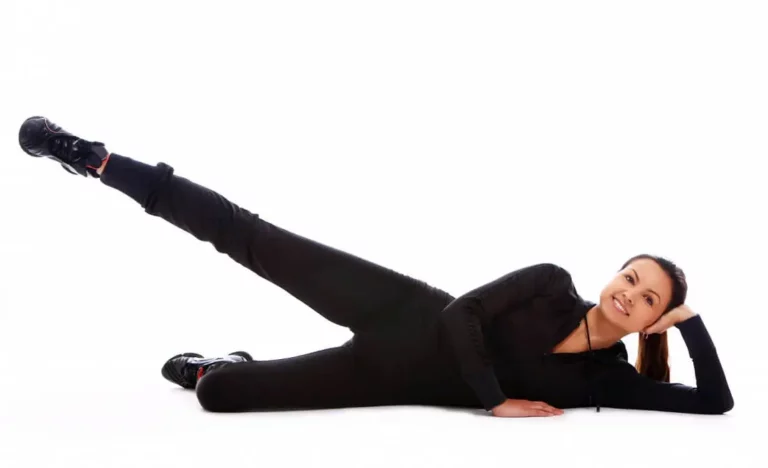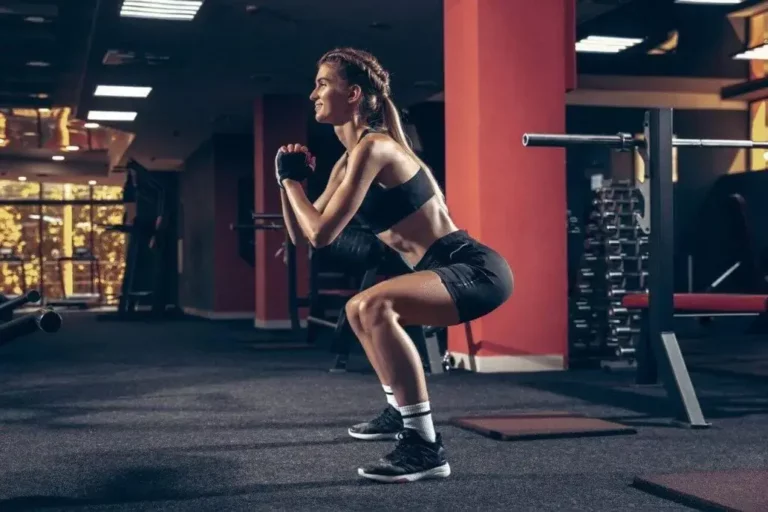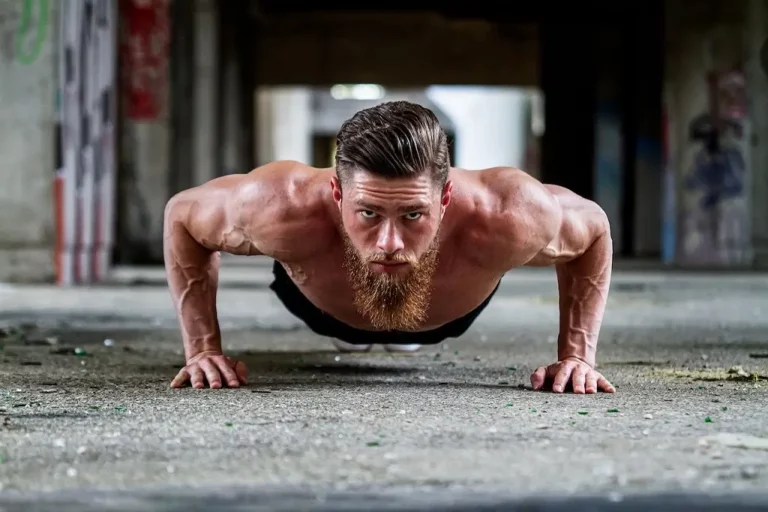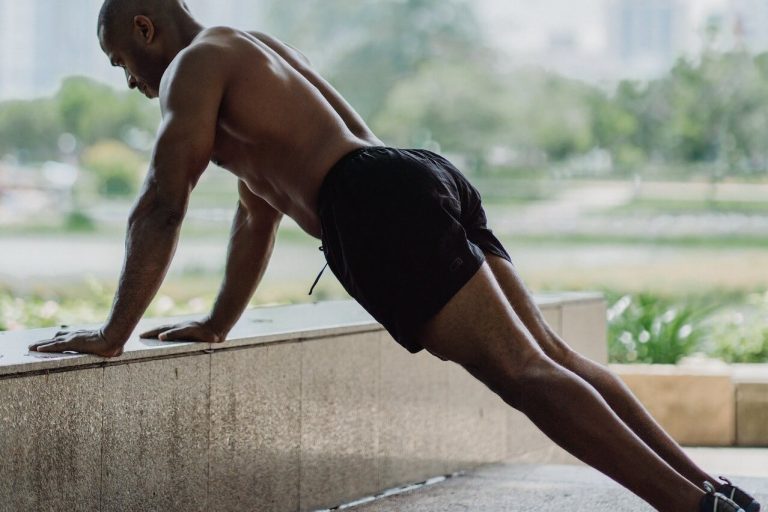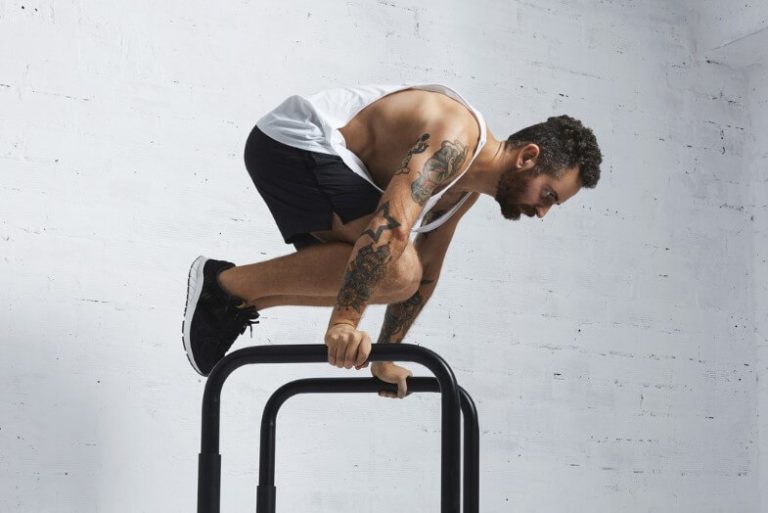Back Lever – Impressive And Hard But Achievable Skill
The back lever is an advanced skill. It can be done on rings or a pull up bar. You will be holding your body parallel to the ground. Your hands will be behind your back while hanging from a bar or rings.
To be able to do it you will need to have a strong upper body. You also need flexible shoulders to pull it off. Your balancing skills will be put to test with this advanced skill.
The back lever is used in both gymnastics and calisthenics.
Back lever benefits
Some benefits of doing the back lever include:
- Increased upper body strength: Most of your upper body muscles will work when you do this exercise. This will increase the strength of your upper body.
- Improved balance: To hold your body in this position you need balance and control. It will improve your balancing skills over time.
- Improved posture: Lower back muscles hold your weight when hanging. A strong lower back keeps your body straight when standing. So, working on this skill will help you improve your posture.
- Improved shoulder mobility and strength: You will hold your entire body weight mostly by your shoulders when doing the back lever. While you hold your weight your arms will be extended to your back. You will have to slowly improve your shoulder strength and mobility to pull it off.
Who should avoid doing back lever?
This is an advanced skill. Before jumping ahead, be aware of your limitations. Always consult a trained professional to avoid risking your health.
You should avoid the back lever if:
- Your wrists hurt
- Your shoulders hurt
- You are recovering from an injury
- You are just starting out and can’t do skin the cat and German hang exercises
Use an overhand grip to reduce the risk of injury with the back lever.
Equipment
You will need access to pull up bar, dip bars, or rings to do this exercise. Depending on the equipment you have, you can choose the right tool. You have a few options:
Back lever muscles worked
Your shoulders will take the most load with this skill. But, shoulders are not the only muscles involved. Most of your upper body muscles will fire off when doing the back lever.
Back lever muscles worked:
Primary:
- Delts
- Lats
- Biceps
- Forearms
- Traps
- Rhomboids
- Teres minor
Secondary:
- Pec major
- Lower back
Correct body position
Working on any skill with strict form is the key. The right form will help you use your muscles most effectively. It will also prevent injury. To get into the right position for this exercise, you should take care of your:
- Grip
- Shoulder position
- Spine position
Grip
To reduce the risk of injury when doing this exercise, use an overhand grip. When using an underhand grip the risk of shoulder injury is increased. This is the same grip you are using when doing pull ups. The underhand grip is also hard on your biceps and elbows. So, the safer grip is the same as in chin ups. In this case, your palms are facing toward you.
Shoulder position
The right position of your shoulders will help you prevent injury and make this exercise easier to do. There are two details you need to watch out for:
- shoulder depression
- shoulder protraction
To depress your shoulders try pulling your shoulders down. Pull your shoulders toward your hips. To protract your shoulders think about getting your shoulders closer together in front of you. This will make it easier and safer.
Spine position
To get a strict form focus on your spine. Bend the upper portion of your back. This is the same position of your spine as in push ups. It will make your body a bit shorter. This makes it a little bit easier to do the back lever.
How to do a back lever
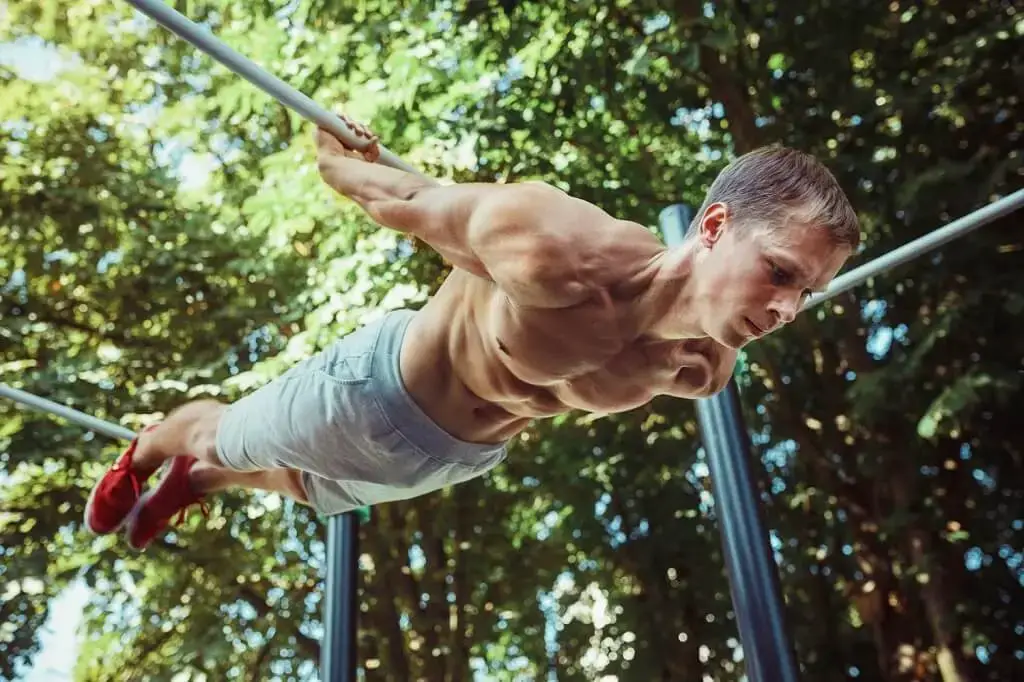
Positioning (harder version)
Grab a bar or rings with your palms facing toward you. You can also do it with your palms facing away from you. But, this kind of grip might be harmful to your shoulders.
Raise your knees up. Lift your knees as close to your chest as you can.
When you raise your knees, you reduce the lever. So, it will be easier to lift your lower body up.
Lift your legs up until you are hanging upside down. Keep moving your legs past the upside down position.
Extend your legs when you reach the lowest position. The movement you just did is called “skin the cat”. The ending position is called “German hang”.
With your legs straight, raise your lower body up. Keep on raising your body until it’s parallel to the ground. You are in a back lever position.
Positioning (easier version)
There is an easier way to get into the right position. Instead of going all the way to a German hang, you will do only a part of the “skin the cat”.
When you lift your legs so you are upside down, continue rotating just a little bit more. Start extending your legs until your body is straight. When your body is parallel to the ground you are in a back lever position.
Performing
Hold this position for as long as you can.
Progression
The back lever is the hardest exercise in a back lever progression. It will take patience to build the strength and balance needed. If you take your time and work consistently you will be able to pull it off in the end.
There are a few easier exercises that will help you slowly increase the tension. You start with easier exercises and progress to harder ones.
They will help you build the strength, shoulder mobility, and balance needed. This is how you get better in time.
Here are some of the exercises you can do to prepare for this skill:
- Skin the cat
- German hang
- Tuck back lever
- One leg back lever
- Straddle back lever
Back lever difficulty
In gymnastics, the back lever is rated an A-level skill. The scale is from A to F. A is the easiest. F is the hardest.
So, it’s one of the easiest skills. At least in gymnastics. “Normal” folks may find it more difficult.
Back lever vs front lever
The difficulty of the back lever and front lever depends on your strength and mobility. Mostly, the front lever is thought to be a more difficult exercise. On the other hand, people think the back lever is easier.
The core, lats, and shoulder strength needed for the front lever makes this exercise hard. But, the back lever might be an issue for someone who has problems with shoulder mobility.
Key takeaways
The back lever is a great exercise for building your shoulder strength and mobility. It will also help you improve your balancing skills.
It’s an advanced skill. Train for it with patience and consistency. If you put in the time and work, you will be able to pull it off in the end.

